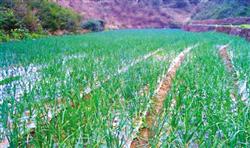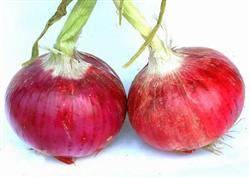The "five hurdles" should be taken to raise onion seedlings in autumn.

Onion has the characteristics of less input, high yield, simple management and high benefit. It is an ideal vegetable variety for vegetable farmers to carry out commercial production and increase income. Early September is the best season for onion seedling. The key points of seedling technology are described as follows. Ziyu 1, Ziyu 2, Zixing, Shuanghuanghong and other purple skin varieties can be selected for production. These varieties have the characteristics of strong spicy taste, high yield, excellent quality and suitable for export. These varieties generally yield about 5000 kg per mu, and the yield per mu of high-yield plots can reach 7500 kg. Seedbed close seedbed should choose loose soil, fertile, water retention, 3 years without planting onions, garlic vegetables plot. Nurturing seedlings for field use per mu requires a seedbed area of about 35 square meters and a seed amount of 0.5 kg. Before sowing, apply enough decomposed farm manure, add 20~30 kg of nitrogen, phosphorus and potassium ternary compound fertilizer, then plough, prepare fine soil preparation, make 1.5~2 meters wide bed, irrigate thoroughly, wait for sowing. The sowing time directly affects the seedling size, thus finally affects the onion yield. Early sowing, seedling growth period extended, resulting in too large a nutrient area, seedlings easy to appear bolting; late sowing, seedlings weak, low cold tolerance, easy to appear dead seedlings over winter. Therefore, in order to achieve high yield, we must master the best sowing time. According to the experience of local vegetable farmers, the most suitable sowing time is 3 days before and after white dew (early September). Dry seeds are used for sowing, and fine soil is covered after sowing, so that seeds are not seen. After covering the soil, 33% weeding can be used per mu of seedbed through 100 ml spray to prevent weeds in the seedbed. After sowing, cover a layer of wheat straw on the ridge surface, which is beneficial to moisture retention, high temperature prevention and rain prevention. Before emergence, keep the soil moist all the time. When about 60% of seedlings grow out on the seedbed, remove the mulch. Spray water in time according to weather conditions to prevent the seedbed from hardening. Apply a small amount of urea in combination with watering. Cultivate strong seedlings of appropriate age through fertilizer and water regulation. It is necessary to prevent seedlings from growing too large, causing early bolting, and to avoid seedling growth thin, affecting winter. Generally, onion seedlings can be planted when they grow to 4 true leaves, plant height is 20~25 cm, and leaf sheath diameter is 6~7 mm. When planting, onion seedlings should be transplanted separately according to their size, so that they grow uniformly, and large seedlings with leaf sheath diameter more than 8 mm and weak seedlings less than 3 mm and diseased seedlings should be eliminated. Colonization is generally completed from the end of October to the first ten days of November, and the daily average temperature is required to be 4℃~5℃ for colonization. Because onion takes about 30 days from planting to recovery, it is necessary to promote its root growth and development well before the arrival of cold to prevent soil freezing and root lifting from causing dead seedlings. Planting density requires row spacing of 20 cm, plant spacing of 15 cm, planting depth to not bury the pentagon is good. After planting, watering can promote onion seedling survival. Avoid flood irrigation, which will cause soil hardening, which is not conducive to onion rapid recovery and growth.
- Prev

Varieties and classification of onions
The main results are as follows: 1 the main types of onions can be classified into ① common onions (AlliumepaL.) each plant usually forms only one bulb. Seeds propagate, and a few varieties form aerial bulbs on inflorescences under special conditions. Common onions are generally divided into oblate balls in the shape of their bulbs.
- Next

You can get more onions in the cotton industry in one fell swoop.
The seeds of yellow onion are small and relatively strict on seedbed quality, sowing requirements and post-sowing management. Therefore, the relevant problems that must be paid attention to when sowing and raising seedlings of yellow onion are described as follows: 1. Choose to stay in the seedbed. The seedbed should choose high and cool terrain, fertile soil, convenient drainage and irrigation and unplanted in the past 1-2 years.
Related
- Where is it suitable to grow horseradish in China? it is expected to see the middle altitude horseradish in Alishan.
- How to prevent tomato virus disease reasonably? (Control methods included)
- Many people like to plant towel gourd on the balcony. What are the main points of this method and management?
- What crops can chili peppers be mixed with?
- Fertilization techniques and matters needing attention in Tomato
- What are the grafting techniques for peach seedlings in spring?
- Harm and control methods of root swelling disease of Chinese cabbage
- What are the pests of sweet potatoes? How to prevent and cure it?
- Symptoms, causes and Control methods of navel Rot in Tomato
- The cause of "Cucumber rotten bibcock" in Farmers' planting Cucumber and its Control Plan

